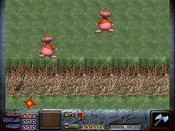Reply to Re: How does this work?
If you don't have an account, just leave the password field blank.
Here's how it works:
Your data is a series of 1's and 0's on the drive. Now, say you fill up your disk with data, and then delete everything on it. Well, in reality, all you're doing is removing the *reference* to the file - the data is still stored on the disk. The data will remain on the disk until it is written over by something else, which could take a long time depending where on the disk the data was.
For example, if the disk was half full and an offending file was added and later deleted, the file remains on the disk. Now, say your files were removed. You would have to write a lot of data back to overwrite that other file - whatever size your disk is divided by two plus the size of the file - in theory, anyway: most of the time data isn't sequentially added, and that's where defragmentation comes in, but that's tangential.
So, that's why formatting your drive - even using Windows format - doesn't remove the data. You have to do something called a Low Level format, which writes zeroes over every available space on your drive, to remove your data. But residue can still remain and recovery is still possible. That's why the Department of Defense developed the DoD 5220-22.M wipe method, which writes hex values across your hard drive seven times (there are others, such as Canada's RCMP TSSIT OPS-II, or the Gutmann process from New Zealand). After doing these you can be pretty sure your data won't be recovered.
EDIT: Magicman, FAT is only one type of filesystem, developed by Microsoft. Decent file systems use an inode-based system.
Your data is a series of 1's and 0's on the drive. Now, say you fill up your disk with data, and then delete everything on it. Well, in reality, all you're doing is removing the *reference* to the file - the data is still stored on the disk. The data will remain on the disk until it is written over by something else, which could take a long time depending where on the disk the data was.
For example, if the disk was half full and an offending file was added and later deleted, the file remains on the disk. Now, say your files were removed. You would have to write a lot of data back to overwrite that other file - whatever size your disk is divided by two plus the size of the file - in theory, anyway: most of the time data isn't sequentially added, and that's where defragmentation comes in, but that's tangential.
So, that's why formatting your drive - even using Windows format - doesn't remove the data. You have to do something called a Low Level format, which writes zeroes over every available space on your drive, to remove your data. But residue can still remain and recovery is still possible. That's why the Department of Defense developed the DoD 5220-22.M wipe method, which writes hex values across your hard drive seven times (there are others, such as Canada's RCMP TSSIT OPS-II, or the Gutmann process from New Zealand). After doing these you can be pretty sure your data won't be recovered.
EDIT: Magicman, FAT is only one type of filesystem, developed by Microsoft. Decent file systems use an inode-based system.








